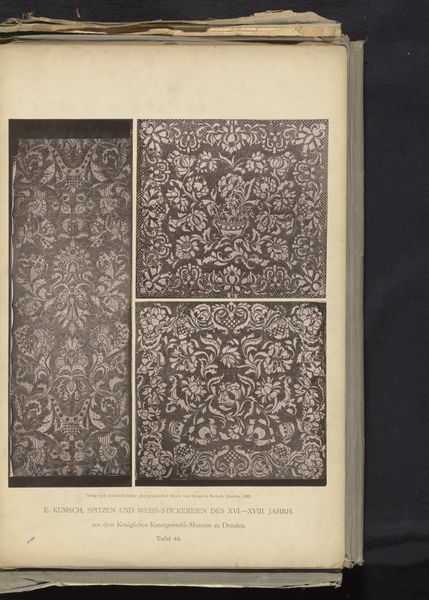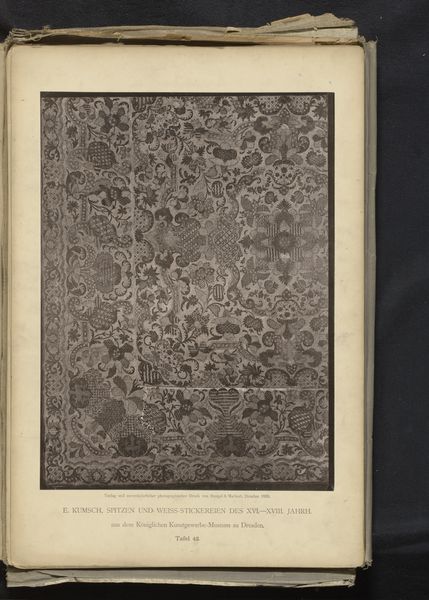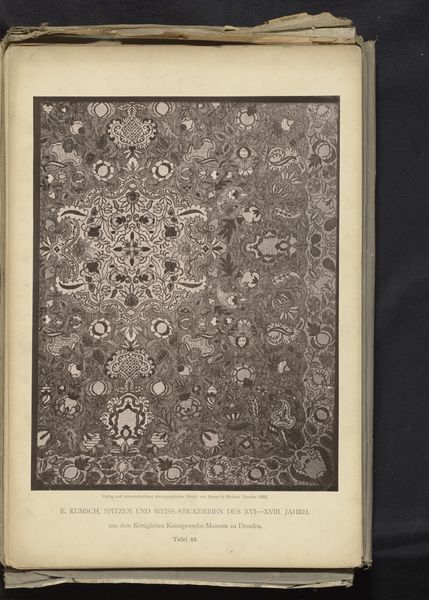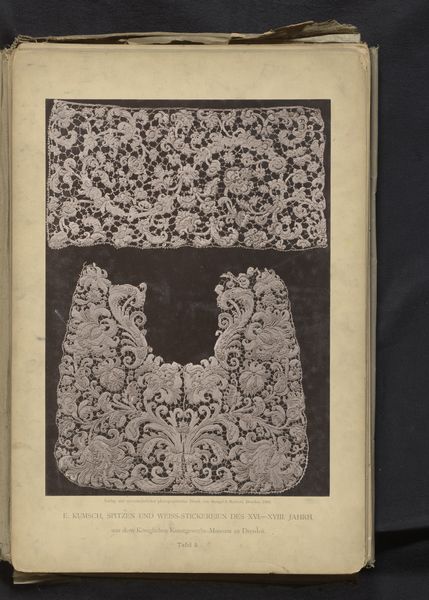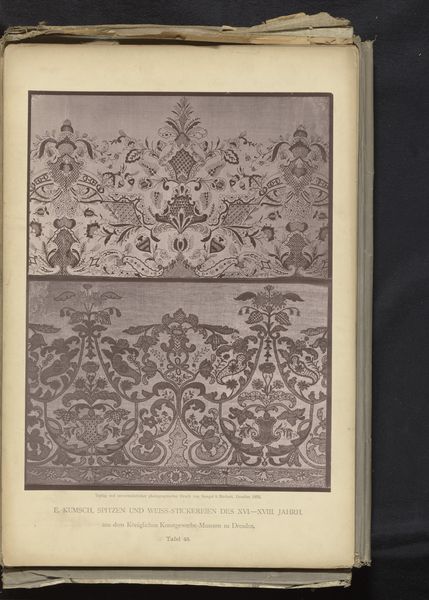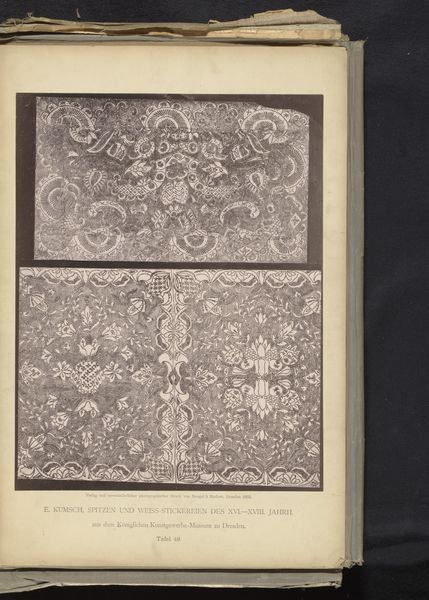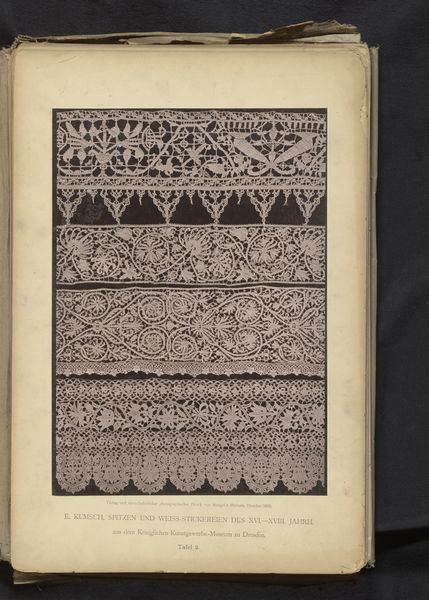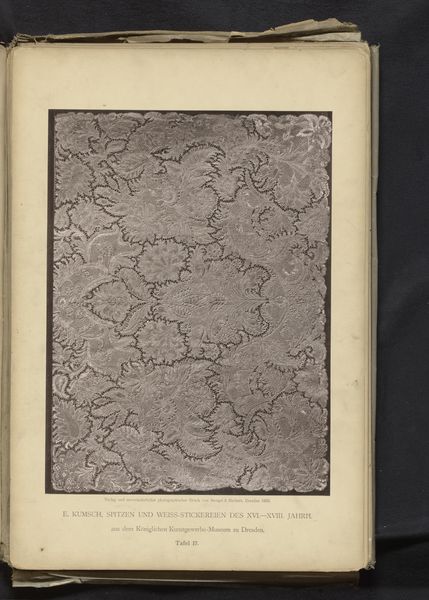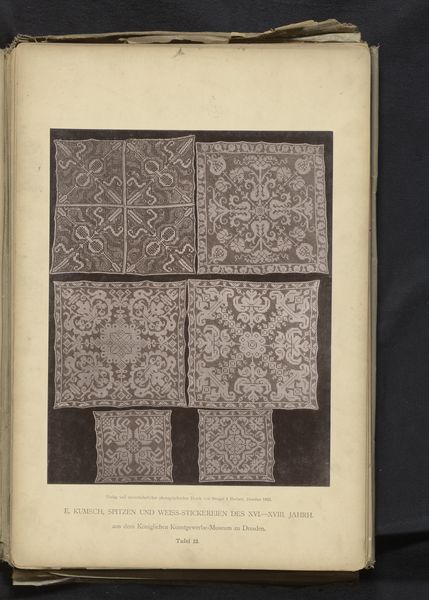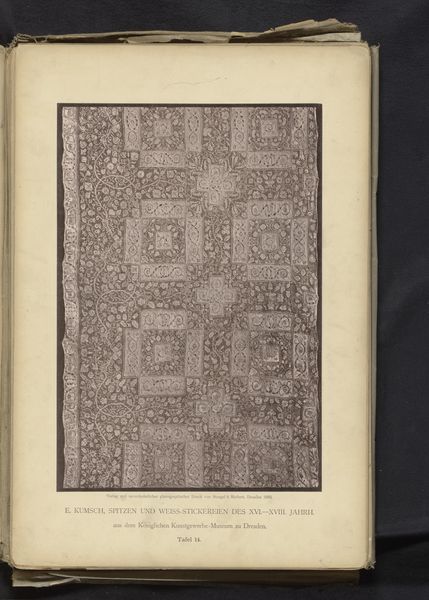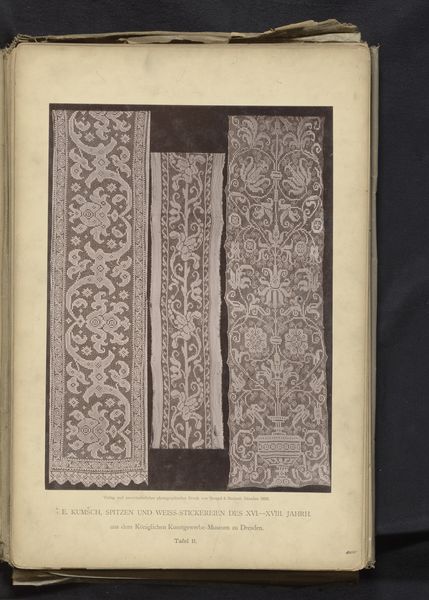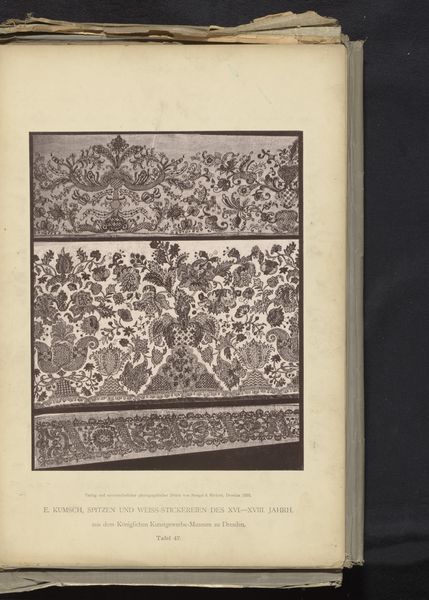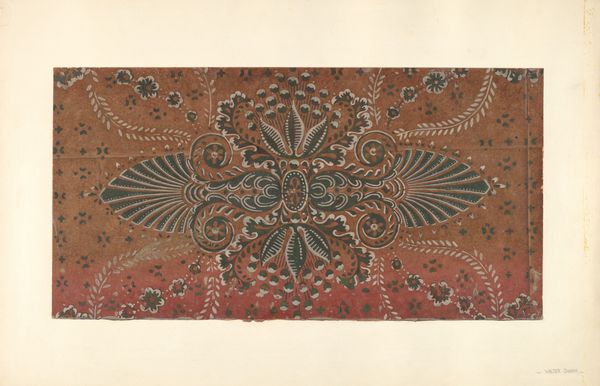
Twee stukken Duits borduurwerk uit circa 1720, uit de collectie van het Kunstgewerbemuseum in Dresden, Duitsland 1888
0:00
0:00
anonymous
Rijksmuseum
graphic-art, print, textile
#
graphic-art
#
ink paper printed
# print
#
old engraving style
#
textile
#
history-painting
#
decorative-art
Dimensions: height 360 mm, width 284 mm
Copyright: Rijks Museum: Open Domain
Curator: At the Rijksmuseum, we have this interesting print from 1888. It depicts "Twee stukken Duits borduurwerk uit circa 1720," showcasing two pieces of German embroidery from around 1720, sourced from the Kunstgewerbemuseum in Dresden, Germany. Editor: My first impression is of intense labor, the dedication it must have taken to produce these intricate designs, especially considering the time. It feels very dense, almost claustrophobic in its detail. Curator: Absolutely. These weren’t just decorative pieces, but embodiments of skill and social standing. Embroidery in the 18th century served as a powerful marker of identity, particularly for women of a certain class. Their labor—seen here through a print reproduction—was both a creative outlet and a form of cultural capital. Editor: And the materials themselves. The choice of thread, the fineness of the fabric; each contributes to the overall statement. One wonders about the source of these materials, the trade routes, the economics of embellishment… It's a glimpse into a world of elaborate consumption. Curator: Indeed. The printing process also shifts our understanding of labor and craft; taking these highly tactile, unique embroidered works and reproducing them for broader consumption. These printed images allow access and the circulation of knowledge regarding textile production. Editor: Thinking about those original embroiderers…the skill passed down through generations... Are these prints aimed at inspiring similar work, or more as a record of what was being created? Curator: It likely served both purposes, displaying craftsmanship but also contributing to a broader dialogue around taste and design at the time, and helping form collections for public institutions. The museum, through acquisitions like these, also shaped the narrative of artistic importance, giving objects value. Editor: It’s remarkable how something so delicate could also represent so much economic and social weight. Considering the long hours and fine materials, one understands the elite context in which this type of material would have been at the time of their making. Curator: Yes. Studying it today forces us to acknowledge the politics of craftsmanship. This printed documentation makes us also think about the value judgements that are produced over objects from the past, not as a neutral endeavor, but a value judgement in and of itself. Editor: Looking at it from this perspective, this printed piece brings us far from delicate craft and brings into discussion labor history, and value within artistic representations, an interesting addition to the collection.
Comments
No comments
Be the first to comment and join the conversation on the ultimate creative platform.

